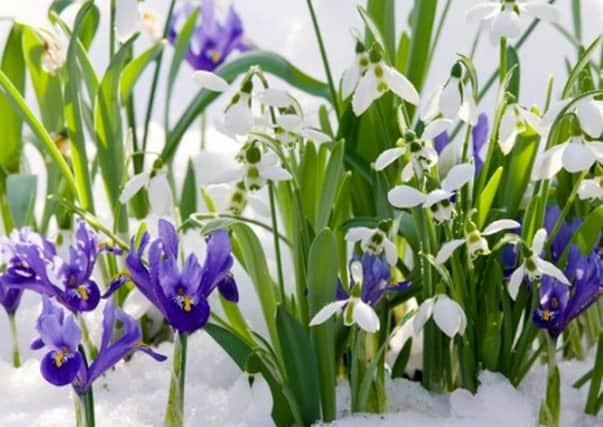BRIAN KIDD: Strange but true, now's the time to plant your snowdrops


Building all around us has caused the water table to rise which means we have several areas covered with water.
We can’t even walk on the lawn nearest to our bungalow. It is so slippery there is a danger of falling over. One dry week would help a lot.
Advertisement
Hide AdAdvertisement
Hide AdIn the front garden, where it is well-drained, we have been blessed with lovely drifts of golden crocus flowers in an area of the lawn which is not mown regularly.
Just underneath the leylandii conifer hedge, the snowdrops look marvellous. These clumps were planted 15 years ago and were planted as tiny seedlings ‘in the green’.
Of course, they have matured and now they form a beautiful drift of gently nodding pure white snowdrops – the best description ever.
A lot of people tell me they can’t get snowdrops to grow. This may be because they plant the tiny bulbs in the soil in autumn.
Advertisement
Hide AdAdvertisement
Hide AdIf this is the case, it is a pity but the bulbs are so tiny they are disturbed by worms, squirrels and even blackbirds who scratch about and hook out the tiny bulbs.
Amazingly, this is the right time to plant bulbs for flowering next winter, so have a look at the adverts in monthly gardening magazines or even local markets. They will have snowdrops ‘in the green’.
As soon as they arrive, plant them in soil which has been dug to a depth of about a foot. It may seem quite deep, but you will probably know that snowdrop roots are up to 10 inches long.
Plant the bulbs so the white part of the stem is just below the surface of the soil. This will ensure that birds and squirrels won’t dig them out.
Advertisement
Hide AdAdvertisement
Hide AdSingle snowdrops are best. The mother bulbs will produce babies alongside, in addition to single flowers producing seeds.
The seeds fall alongside the mother bulb. They grow and look like blades of grass. These will come into bloom when they are two years old.
Double snowdrops produce baby bulbs alongside the mother bulb, but double-flowered snowdrops don’t have any seeds. If you desire a carpet of these little gems, buy some single-flowering bulbs.
By the way, if you love winter flowering aconites, these too are best planted ‘in the green’. They are in garden centres, already in little pots, but no-one buys them because they don’t know what they are.
Advertisement
Hide AdAdvertisement
Hide AdDon’t give up if you can’t find winter aconites or snowdrops ‘in the green’. Buy some dry ones in autumn, plant them in three-inch diameter pots, three to a pot, in any type of potting compost.
This is best done in September or October. Plant them out into the garden once the pots are full of roots, just like I recommend for anemones.
If you read my articles regularly, you will know I always say that snowdrops flower every Sunday in February. Well this year they may still be in bloom on the first Sunday in March – good!
THIS WEEK’S TOP TIP
Pop along to your garden centre and look for pots of coloured primroses. These have been hybridised so that the blooms are large and the flowers will last for weeks.
It is an ideal plant for instant colour in any garden large or small. We are fortunate in having clever plant breeders.